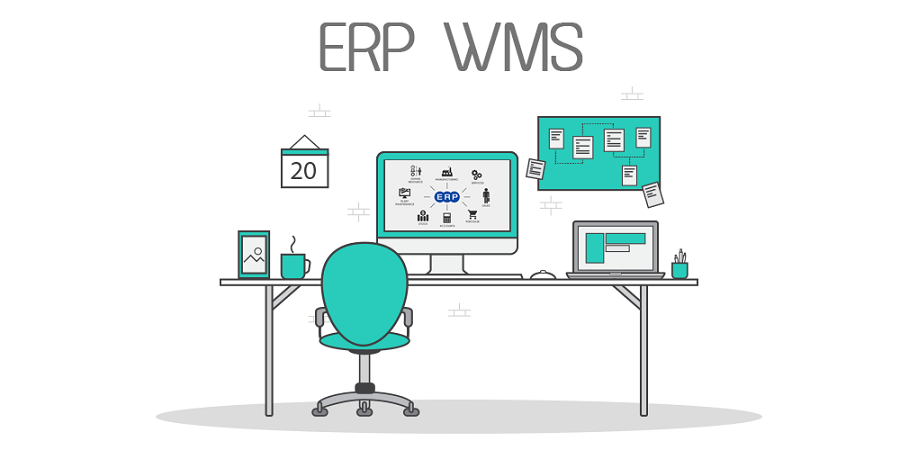What is a warehouse ERP?

An enterprise resource planning (ERP) software is used as a centralized database for storing, analyzing and managing all the data that flows through the business.
This helps to create strong interdepartmental links and encourage collaboration among vendors and distributors. A warehouse ERP is one that is based on storing data about warehouses, where certain goods are kept, the amount of goods left and details of transfers to retail stores at specific times.
Warehouse IT solutions are beneficial for monitoring the purchase orders of multiple sites all at once, especially proving to be helpful for the manufacturing sector.
Particularly for inventory management, warehouse ERP becomes essential as it maximizes efficiency by distinguishing modules for each function of the warehouse.
Annual or monthly reports being produced show the unexpected obstacles to the marketing plan of the firm and the approach taken by managers during times of such impending crisis.
What type of ERP should I choose?
Each firm needs to decide whether they will want a cloud-based ERP system or an on-site ERP system.
Both have their pros and cons: on-site ERP facilities, even though they provide a holistic view of operations, are very difficult to set up and the delay in time can reduce the efficiency of the firm significantly, whereas cloud-based ERP systems are much more automated but much more vulnerable to cyber-attacks and corporate espionage.
After deciding which type of ERP solution to get, we can move on to discussing how it can be optimized for inventory management.
Features of a warehouse ERP
There are different features of such a software that make it suitable for optimum profits in a competitive industry.
In this article we’ll discuss a few of those features and showcase their unique benefits for inventory management.
The key takeaway is to achieve greater sales over a shorter span of time, generating real-time wide margin profits.
1. Accuracy in data:
Warehouse ERP provides a centralized database and consistent stream of updates on stock, orders and customer feedback to different parts of the firm.
The data is sifted through and automated to reduce the possibility of errors, something that manual entry of data is notorious for. Data collection is of high quality, as the data is arranged and assorted in a way that displays the glaring flaws and points to areas of improvement.
Data analysis plays a crucial role in determining the future plans of the warehouse and decisions such as whether it can increase its capacity for more stock or not.
It can also help in planning replenishment orders. With fewer transactions by deciding the right amount during which to buy more products, replenishment orders can be optimized by ensuring there are sufficient goods for the next three to six months.
2. Surplus inventory management:
Surplus inventory can occur due to a number of reasons. It can be due to an economic downturn due to the economic cycle, or it can be a reduced demand for a substitute good or a new product that was released in the market recently.
Whatever the cause may be, warehouse ERP spots these discrepancies immediately and informs the manager.
Additionally, warehouse ERP also provides possible suggestions or plans of actions to charter the course for leftover stock. Items can be returned or new leads or customers can be found to make quick sales, something which is helpful especially for perishable goods.
Delaying such decisions means the indecisive nature of the manager leaves him/her no choice but to move the items to the trash section, where it costs money to dispose of the good, rendering the item useless.
Furthermore, it increases supply chain transparency as external vendors or suppliers can be integrated so that all information regarding a purchase order is communicated to all parts of the chain.
3. Tracking and turnover:
Analysis of inventory allows it to be categorized or classified in any way that you deem fit.
This means you can assess the performance of a particular good: whether it is moving faster or slower than another group, whether it is being used up faster than you expected, whether it is being replenished at the correct rate etc.
It can also be used to identify which customers do not confirm orders and whether to cut off those customers due to their lack of engagement.
The shelf-life of items can also be monitored and observed as to whether they are turning over before they expire. By altering the environment to make it more suitable, the shelf-life of goods can be increased considerably.
Being able to buy in small or large batches is also a useful way to keep sufficient stock in the warehouse.
Conclusion
In conclusion, we can see that the exclusive features of centralized data and automated reporting systems in warehouse ERP make integration of interfaces and others in the supply chain easier, and increases the overall efficiency of transferring, replenishing orders and keeping track of all the resources in place.
This allows a greater expansion in business, not just in the existing markets but also in terms of explorations and ventures in new industries, whether it be locally or beyond national borders.
There are many warehouse ERP systems available in the market. Among all that we have seen, we believe Odoo is the premium choice.
Odoo is a user-friendly software built under the same UI which uses one app to do all the jobs in one: streamlining operations, managing invoicing and boosting sales.
It has fast servers all over the world and has many different apps including one for warehouse ERP, which includes the ability to customize and design a template for your warehouse.
Within each app, it has different modules, one specifically catered towards inventory management, ensuring the products in warehouse facilities are monitored continuously.
Syncoria, a digital transformation company based in Canada, is an official Odoo Ready partner. To contact Odoo, call at +1 (416) 628-5522, or email them at odoo@syncoria.com.